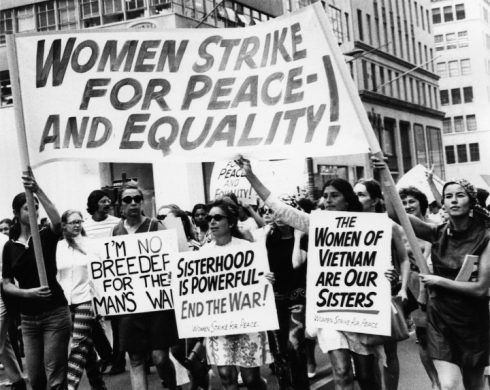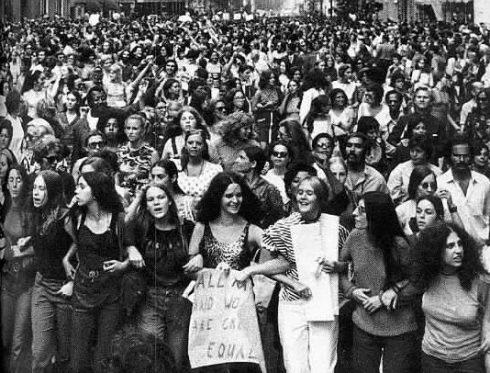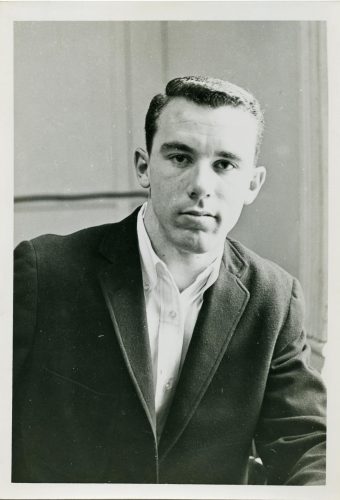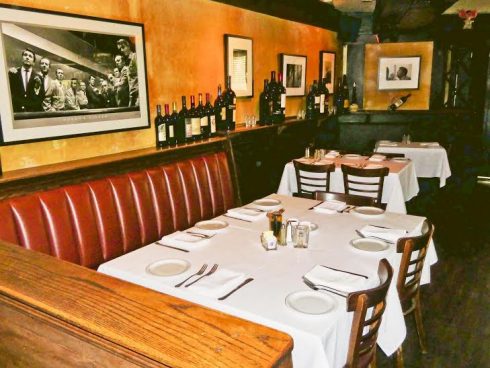Susan Brownmiller, Kate Millett and Other Prominent Second Wave Feminists will speak out against Trumpism at June 10 Reunion in Greenwich Village


Women’s Strike for Peace-And Equality, Women’s Strike for Equality, Fifth Avenue, New York, New York, August 26, 1970. (Photo by Eugene Gordon/The New York Historical Society/Getty Images)
By Mary Reinholz
Radical feminist Susan Brownmiller has plenty of room at the top in her Greenwich Village penthouse near the meat packing district. Outside on the terrace is her urban oasis of carefully cultivated plants, trees and flowers, the subject of her latest book, “My City Highrise Garden” (Rutgers University Press). To a casual observer, she appears to lead an idyllic existence in lower Manhattan.
But Brownmiller, a self-described “82-year-old celibate heterosexual,” isn’t always at peace in her spacious 20th floor pad (now shared with a roommate). It’s a rent stabilized unit which she rented at triple the cost in her Jane Street building several years after the 1975 success of her groundbreaking treatise on rape: “Against Our Will,” a tome that established her as a prominent voice in the women’s liberation movement even while some leftwing feminists denounced her for becoming a star name in a collective effort to achieve gender equality. Read more
THE DAUNTING PERILS OF THE WRITING TRADE

Sports Editor of College Newspaper– circa 1967. The essay is in conjunction with the recent California Newspaper Publishers Association award he received for “Best Column Writing” in the weekly newspaper category.
By Bob Vickrey
Upon returning to the writing life as a newspaper columnist several years ago after a mere 40-year career detour in the book publishing business, I was reminded of the precarious journey a writer faces from their public exposure.
One of the first columns I wrote after my return was published in my hometown paper in Houston as I attempted to capture the essence of growing up in post-WWII suburbia. The piece received prominent positioning on the op/ed page of the Sunday edition of the Houston Chronicle, which immediately triggered numerous responses from old friends and classmates in the area who had noticed my byline. Read more
Los Angeles Housing Crisis Feeds Homelessness

Leslie Evans
Median rents in Los Angeles increased 32% between 2000 and 2017, according to a May 2017 report by the Public Policy Institute of California. Over the same period, household income decreased by 3% when adjusted for inflation. The real estate website Trulia reports that in Spring 2017 the median rent for a two-bedroom apartment in Los Angeles was $2,600. A UC Berkeley study by the Urban Analytics Lab found a slightly lower figure, at $2,499. In large parts of Los Angeles this is more than the total annual median household income. In the Adams-Normandie section of South Los Angeles, median household income is $29,000 a year, or $2,417 a month; in Watts it is $25,000, or $2,083 a month. Read more
‘SOPRANOS’ WANNABES VISIT CARMINE’S RESTAURANT

Carmine’s Restaurant booth featuring picture of cast members of “Oceans Eleven” Photo by Barry Stein
By Bob Vickrey
The atmosphere at Carmine’s restaurant in West Los Angeles was so authentically old-world Italian that one would have thought our lunch club group had just taken an exit off the New Jersey Turnpike and slipped into Tony Soprano’s favorite hideaway.
So, like I was sayin’, my pals Pauley, Vito, and Johnny ‘Sack’—better known as Arnie, Barry, and Josh, were seated in our favorite corner booth and were a bit uneasy about who might be coming through the back door. Vito (a.k.a Barry) always seemed to have our backs so we could enjoy the best food in town without looking over our shoulders. Read more
Honey’s Dreamland
NOTES FROM ABOVE GROUND
By Honey van Blossom
(Honey is a Belgian Marxist former strip-tease artiste)
After exposure to sunlight, Kodachromes taken with home cameras in the 1940s and 1950s lost color, becoming fainter. Memory may also turn colors fainter after a time. The colors in the first dream are paler than colors are in real life.
The place was near a lake or marsh. Tall reeds grew at the water’s edge, and the boy hid in them. Women were on an elevation behind above him, and the slope of land and brush concealed them from him. The women sang as they worked. They gathered seeds. They were all safe.
Partly concealed by the brush stood a rabbit that watched the boy without moving. The rabbit had long upright ears that were thin so that the light made them translucent. One of the women called the boy by his other name, not his real name. The boy’s other name was rabbit.
A smooth stone lay in the shallows. The child put his hand in the water and removed the stone. His hand was brown not white. I knew I was dreaming and woke. Read more



